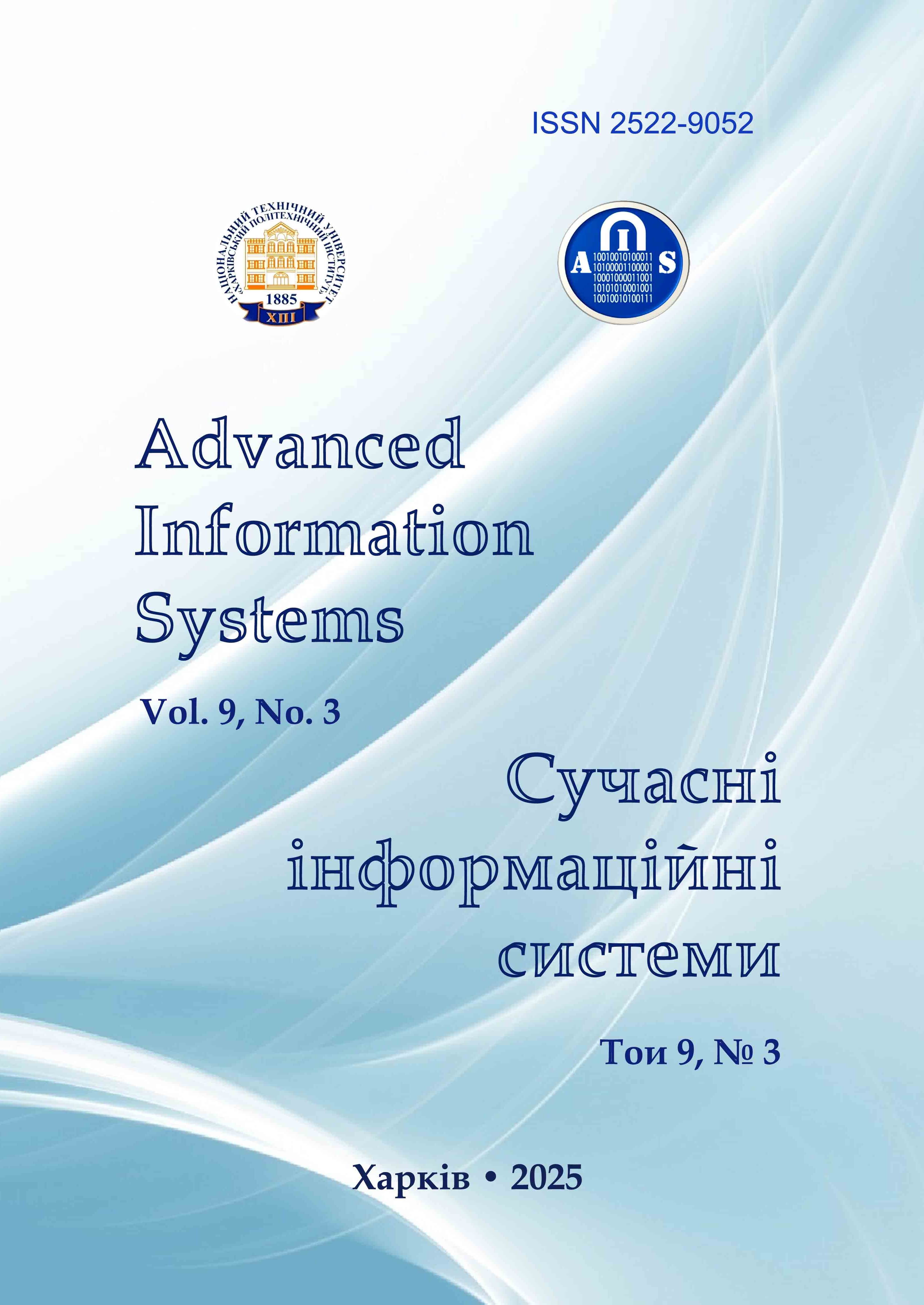DETERMINATION OF PARAMETER-LIMITED ESTIMATES OF EXTREME VALUE DISTRIBUTIONS AND MODELING OF CONDITIONS FOR THEIR OCCURRENCE USING STATGRAPHICS AND MATLAB
Main Article Content
Abstract
Research objective is to estimate the parameters of extreme value distribution laws constrained by parameters using the maximum likelihood method and to model the conditions of their occurrence with STATGRAPHICS and MATLAB tools. The subject of the study includes Anscombe's quartet and the first (Gumbel), second (Fréchet), and third (Weibull) laws of extreme value distribution. The research method involves numerical methods for solving systems of equations obtained by the maximum likelihood method, as well as statistical modeling techniques. The results of research show, through the example of statistical data analysis of Anscombe's quartet, the necessity of verifying the correspondence between the physical content of the studied processes and the applicability of extreme value distribution laws for their analysis. The linear regression equation, which corresponds to all possible combinations of this quartet’s data, is not optimal according to the criterion of maximum coefficient of determination. Using this criterion, it has been established that different data pairs have different nonlinear regression equations. Ignoring this fact may lead to errors in managing the processes they model. It has been shown that the data presented in Anscombe's quartet follow Gumbel's law, although the construction scheme of Anscombe's quartet does not correspond to the conditions of its occurrence. The limiting laws of extreme value distribution are presented in a form convenient for practical application in the design of engineering structures with constraints on the parameters of these distributions, caused by the specifics of the design. Parameter estites of extreme value distribution laws were performed using the maximum likelihood method. A numerical method for solving the corresponding systems of equations was considered. For modeling the scheme of extreme value occurrence, a matrix of random variables was generated, with twelve columns simulating monthly observations of a certain geophysical phenomenon, and one hundred rows representing a century of observations. The possible distributions of the elements of these matrices (initial distributions) were assumed as follows: double exponential distribution, Laplace distribution, lognormal distribution, Rayleigh distribution, normal distribution, Champernowne distribution, maximum extreme value distribution, minimum extreme value distribution, Birnbaum-Saunders distribution, Burr Type XII distribution, generalized extreme value distribution, inverse Gaussian distribution, Weibull distribution. The conditions of invariance of the extreme statistics distribution laws concerning the initial distributions were confirmed in only 12 out of 48 possible cases when modeled with STATGRAPHICS, and only in 5 out of 18 possible cases when modeled with MATLAB. The modeling results revealed a significant difference between the actual and theoretically possible extreme value distribution laws, which may be due to the peculiarities of the random number generation algorithms and the choice of the best-fit distributions used in STATGRAPHICS and MATLAB systems.
Article Details
References
Arnold, B. C., Balakrishnan, N. and Nagaraja, H. N. (1998), Records. Hoboken, NJ, USA: John Wiley & Sons, doi: https://doi.org/10.1002/9781118150412
Chandler, K. N. (1952), “The Distribution and Frequency of Record Values”, Journal of the Royal Statistical Society Series B, Vol. 14, pp. 220–228. available at: https://www.scirp.org/reference/referencespapers?referenceid=69144
Gumbel, E. J. (1954), Statistics of extremes, Columbia Univ. Press, New-York, 400 p. available at: https://www.scirp.org/reference/referencespapers?referenceid=1650874
Sarhan, A. E., and Greenberg, B. G. (1962), Contributions to Order Statistic, John Wiley & Sons, New York – London, 482 p. doi: https://doi.org/10.1002/BIMJ.19640060221
Anscombe, F. J. (1973), “Graphs in statistical analysis”, The American Statistician, vol. 27(1), 17, doi: https://doi.org/10.2307/2682899
Fabozzi, F. J. (1997), Advances in fixed income valuation, modeling and risk management, Associates New Hope, Pennsylvania, 391 p. available at: https://www.amazon.com/Advances-Valuation-Modeling-Management-Fabozzi/dp/1883249171
Kotz, S. and Nadarajah S. (2000), Extreme Value Distributions: Theory and Applications, Imperial College Press, London. 185 p. available at: https://www.goodreads.com/book/show/3721370-extreme-value-distributions
Ramos, P. L., Louzada, F., Ramos, E. and Dey, S. (2019), “The Fréchet distribution: Estimation and application - An overview”, Journal of Statistics and Management Systems, vol. 23(3), pp. 549–578, doi: https://doi.org/10.1080/09720510.2019.1645400
El-Sagheer, R. M. (2014), “Inferences for the Generalized Logistic Distribution Based on Record Statistics”, Intelligent Information Management, vol. 06(04), pp. 171–182, doi: https://doi.org/10.4236/iim.2014.64018
(2024) Life Data Analysis Reference, ReliaSoft Corporation, South Eastside Loop Tucson, Arizona, USA, 632 p. available at: https://help.reliasoft.com/reference/life_data_analysis/pdfs/lda_ref.pdf
Devroye, L. (1986), Non – uniform Variate Generation, Springer-Verlag, Berlin, 859 p. available at: https://luc.devroye.org/rnbookindex.html
Embrechts, P., Klüppelberg, C. and Mikosch, T. (1997), Modelling Extremal Events, Springer, Berlin Heidelberg, doi: https://doi.org/10.1007/978-3-642-33483-2
(2024), IWF technical and competition rules & regulations, available at: https://iwf.sport/wp-content/uploads/downloads/2024/08/IWF-TCRR-2024.pdf
Dubnitsky, V. J. and Protsenko, A. G. (2009), “A comparative analysis of random number generators in statgraphics and mathcad systems”, Radioelectronic and Computer Systems, vol. 7, pp. 85–88. available at: http://dspace.library.khai.edu/xmlui/handle/123456789/3550
Frolov, V., Frolov, O. and Kharchenko, V. (2019), “Classification of Diversity for Dependable and Safe Computing”, CEUR 2362, Conference COLINS, pp. 355–365, available at: https://ceur-ws.org/Vol-2362/paper32.pdf
Nocedal, J. and Wright, S. J. (2006), Numerical Optimization, Society for Industrial & Applied Mathematics, U.S., New York, 401 p. available at: https://www.amazon.com.be/-/en/Philip-Gill/dp/161197559X
Walk, Ch. (2007), Handbook on Statistical Distributions for experimentalist, Internal Report, SUF-PFY/ 96-01, Stockholm, 310 p., available at: https://www.stat.rice.edu/~dobelman/textfiles/DistributionsHandbook.pdf
Soong, T. T. (2004), Fundamentals of probability and statistics for engineers, John Wiley & Sons Ltd, Chichester, 391 p. available at: https://www.wiley.com/en-gb/Fundamentals+of+Probability+and+Statistics+for+Engineers-p-9780470868157
Leadbetter, M. R., Lindgren, G. and Rootzén, H. (1983), Extremes and Related Properties of Random Sequences and Processes, Springer, New York. doi: https://doi.org/10.1007/978-1-4612-5449-2
Dubnytskyi, V., Kobyli, A., Kobylin, O., Kushneruk, Yu. and Khodyrev, O. (2024), “Evaluation of the quality of the uniformly distributed random number generator built into MS EXCEL”, Information Processing Systems, issue 3(178), pp.17–26, doi: https://doi.org/10.30748/soi.2024.178.02
(2024), Continuous Distributions. Compute, fit, or generate samples from real-valued distributions. available at: https://www.mathworks.com/help/releases/R2023b/stats/continuous-distributions.html
